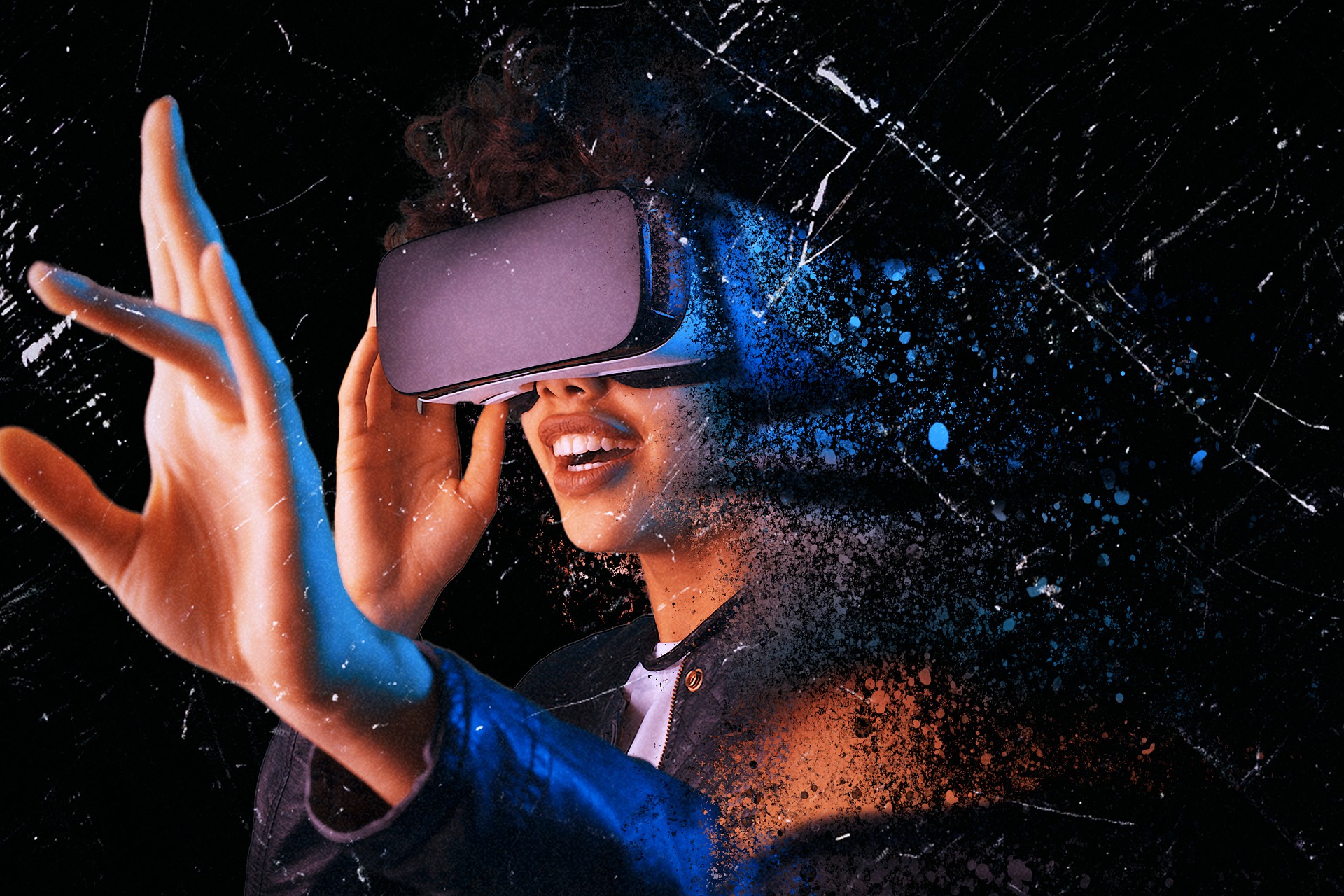Extended Reality (XR): Bridging the Gap between Real and Virtual Worlds
 Amul Gaurav
Amul Gaurav
r"I think everyone would agree that we do not have the science or technology today to build the AR glasses that we want. We may in five years or seven years, or something like that. But we’re not likely to be able to deliver the experience that we want right now. ~ Mark Zuckerberg"
Extended Reality (XR) is an umbrella term that refers to a range of technologies and devices that combine the physical and digital worlds. The three main categories of XR are Virtual Reality (VR), Augmented Reality (AR), and Mixed Reality (MR). VR allows users to immerse themselves in a simulated environment, AR overlays digital information in the real world, and MR combines both, allowing users to interact with digital content in the real world.
An Introduction to Extended Reality
Extended Reality is an innovative technology that has gained a lot of popularity in recent years. It has revolutionized the way we interact with digital content and has the potential to transform many industries. Understanding the difference between VR, AR, and MR is essential to grasp the concept of XR fully. VR creates a completely simulated environment, whereas AR overlays digital content in the real world, and MR combines the two.
The goal of XR is to provide users with a more engaging and realistic experience, enhancing their ability to interact with digital content. Extended Reality is a rapidly evolving technology with vast potential to revolutionize the way we interact with digital content.
The technology behind Extended Reality
The technology behind Extended Reality is complex and requires a combination of hardware, software, and platforms. VR devices include a headset with a screen, sensors, and tracking technology. The sensors track the user's head movements and adjust the display accordingly, providing an immersive experience. AR devices, on the other hand, typically use a smartphone or tablet as the display device and rely on the device's camera to overlay digital content in the real world. MR devices use a headset with cameras to overlay digital content in the real world and allow users to interact with virtual objects.

XR technology also requires specialized software and platforms. Unity and Unreal Engine are popular toolkits that developers use to create VR experiences. ARKit and ARCore provide tools for creating AR applications. The development of XR experiences also requires a solid understanding of UX design principles to ensure that the digital content feels natural and intuitive.
Applications of Extended Reality
The applications of Extended Reality are vast and have the potential to revolutionize many industries. In the field of education and training, XR can be used to provide immersive simulations for training purposes. For example, surgeons can use VR simulations to practice procedures before performing them on real patients. In the entertainment industry, XR can be used to create immersive gaming experiences or virtual tours of real-world locations. In the fashion and art industries, XR can be used to create digital showrooms or immersive art installations. In the real estate industry, XR can be used to create virtual tours of properties, allowing potential buyers to experience a property before visiting in person.
XR technology can also be used in the field of mental health to provide immersive exposure therapy for phobias and other anxiety disorders. Furthermore, the use of XR can help increase empathy and understanding by simulating experiences that are difficult to replicate in real life, such as living with a disability.
Developing for Extended Reality
Developing for Extended Reality requires specialized skills and tools. XR developers need to have a strong understanding of programming languages such as C++ and experience with 3D modeling and animation software such as Maya or Blender. They also need to understand the principles of UX design and have experience working with toolkits like Unity or Unreal Engine.
The development process for XR experiences is complex and requires attention to detail to ensure that the digital content feels natural and intuitive to the user. XR developers must consider factors such as the user's field of view, how they interact with the digital content, and the level of immersion they experience.
Advantages and Disadvantages of Extended Reality
One of the biggest advantages of XR is the ability to provide a 360-degree view of digital content, allowing users to experience environments and scenarios in ways that were previously impossible. XR also provides haptic feedback, which can enhance the sense of immersion. Furthermore, XR has the potential to create new jobs and industries and enhance education and training experiences.

However, XR experiences require specialized hardware, which can be expensive and limit the number of users who can access these experiences. Additionally, the immersive nature of XR can lead to disorientation, motion sickness, and other health concerns, especially if the user is not accustomed to virtual environments. Another disadvantage of XR is the potential for social isolation, as users may become so immersed in the virtual world that they lose touch with the real world.
Despite these limitations, XR has a lot of potential for various applications in many industries. Here are some of the advantages and disadvantages of using XR in different domains.
The Future of Extended Reality
XR technology has the potential to transform the way we interact with digital content and each other. As technology advances, it could lead to new applications and use cases, such as telepresence and remote collaboration.
The development of new technologies, such as 5G and edge computing, could also enhance the capabilities of XR devices and enable new types of applications.
Career Opportunities in Extended Reality
As XR continues to grow, so do career opportunities in the industry. Here are some of the roles that are in demand in the XR space.
VR/AR Developer: VR/AR developers are responsible for creating XR experiences, including designing and developing virtual and augmented reality applications. This includes creating 3D models, programming interactions, and designing user interfaces. They need to be proficient in various programming languages such as C#, C++, and JavaScript, and be familiar with game engines such as Unity and Unreal Engine.
UX Designers: UX designers in the XR industry are responsible for designing intuitive and immersive user experiences for VR and AR applications. They work closely with developers and artists to create interfaces and interactions that are intuitive and comfortable for users.
Digital Artists: Digital artists play a crucial role in creating the visuals for XR applications, including 3D modeling, texturing, and animation. A digital artist should have a strong foundation in traditional art skills such as drawing, painting, and sculpture, as well as proficiency in 3D modeling software such as Maya and Blender.
3D modelers: 3D modelers are responsible for creating 3D models of objects, environments, and characters for XR applications. They work closely with developers and digital artists to ensure that the models are optimized for performance and meet the technical requirements of the XR platform.
Conclusion
In conclusion, Extended Reality is an emerging technology that is poised to transform the way we interact with digital content. Its potential applications are vast and varied, spanning industries such as education, entertainment, tourism, fashion & art, and real estate. While the technology is still in its infancy, there is a growing demand for skilled professionals in the XR industry.

As XR continues to mature and expand, there will be new opportunities for developers, UX designers, digital artists, and 3D modelers to create innovative and immersive XR experiences that push the boundaries of what is possible.
At Cling Multi Solutions, we use the latest technologies to deliver high-end products tailored to your specific needs. Whether you need custom app development, web design, ERPs, or digital marketing, our team of experts is committed to helping your business grow and succeed. Contact us at clingmultisolutions.org, +918264469132, or info@clingmultisolutions.org to learn more about how we can help you achieve your goals.
Subscribe to my newsletter
Read articles from Amul Gaurav directly inside your inbox. Subscribe to the newsletter, and don't miss out.
Written by

Amul Gaurav
Amul Gaurav
Junior CS Major | Full-Stack Developer | GitHub Foundations Certified | Postman Student Expert | SWOC'24